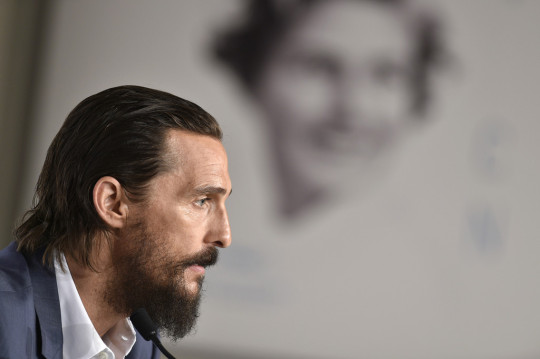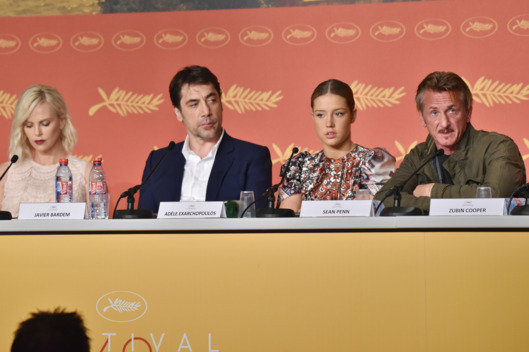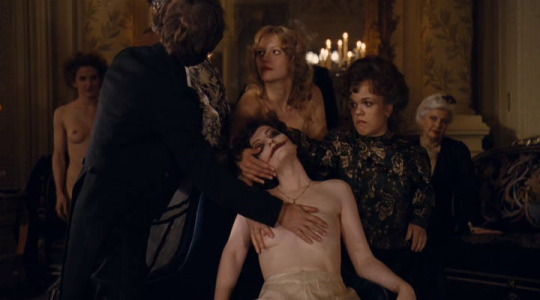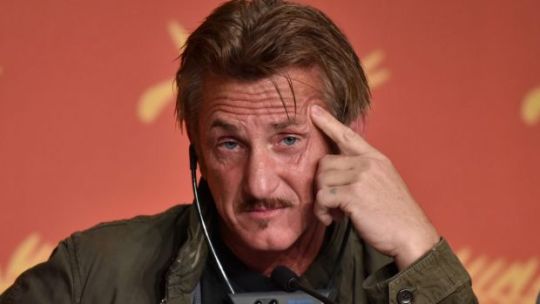Too Big a Fail: Cannes Insta-Flops and the Festival Economy by Mike D’Angelo
By Yasmina Tawil

Cannes Film Festival, 2014. Among the films competing for the Palme d’Or is The Search, Michel Hazanavicius’ highly anticipated followup to The Artist, which had won the Best Picture Oscar three years earlier (after itself debuting at Cannes). Its pedigree is flawless: based on an Oscar-winning (Best Story) 1948 drama of the same title, which had starred Montgomery Clift; a cast featuring former Oscar nominees Bérénice Bejo and Annette Bening; weighty subject matter involving the Second Chechen War. When the press sees The Search, however, they rip it to shreds. “A grueling, lumbering two-and-a-half hour humanitarian tract that all but collapses under the weight of its own moral indignation,” Variety calls it, in one of the kinder reviews. Hazanavicius recuts the film slightly for its tour of the fall fest circuit, but it’s largely ignored, thanks to the toxic word out of Cannes. Today, over two years later, there is still no indication that The Search—which, let’s just note again for the record, is the successor to a major box-office hit that won Best Picture, Director, and Actor at the 2012 Oscars—will get any sort of U.S. release.
Cannes Film Festival, 2015. Among the films competing for the Palme d’Or is The Sea of Trees, a drama about an American man who flies to Japan with the intention of killing himself in Aokigahara, the infamous forest (see: The Forest; nah, don’t see that) where locals commit suicide in alarming numbers. The film stars Matthew McConaughey, who had won the Academy Award for Best Actor just two years earlier (for Dallas Buyers Club); its director is Gus Van Sant, a previous Palme d’Or winner (Elephant, 2003). Expectations are high…until critics just about hoot The Sea of Trees off of the screen. One review accurately deems it “sub-Nicholas Sparks tripe,” a phrase that one wouldn’t generally anticipate when skimming the buzz from the world’s most prestigious film festival. Roadside Attractions, in conjunction with Lionsgate, had picked up the U.S. distribution rights in advance of the world premiere, but wound up sitting on the movie for over a year before finally selling it to adventurous new distributor A24. The U.S. trailer, released just this week, mentions the Cannes selection, but features no critical blurbs at all—an almost unprecedented circumstance for an art film that premiered at a festival. (A24’s trailer for The Lobster, which they picked up from financially troubled Alchemy, includes six blurbs from major critics.) Evidently, they’re hoping nobody will notice.
Cannes Film Festival, 2016. Among the films competing for the Palme d’Or is The Last Face, the fifth feature directed by two-time Academy Award winner Sean Penn. Charlize Theron and Javier Bardem—both of whom likewise have Oscars on their shelves—play a human-rights activist and a doctor, respectively, embroiled in an on-off love affair while working in war-torn Liberia. Before the film screens, Penn tells the Financial Times that “everything is riding” on its critical reception, adding “I think [the movie] will disappear if it gets a poor reaction.” It doesn’t get a poor reaction, though. It gets the single worst reaction of any movie that’s played at Cannes in at least the past dozen years. So blatantly awful is The Last Face that the audience starts mocking it literally seconds after it begins, in response to opening text that’s at once staggeringly pompous, utterly tone-deaf, and even, somehow, ludicrously timed. (A pointlessly pregnant mid-sentence pause must be seen to be believed.) The movie that follows is no improvement, and receives the evisceration it richly deserves. At this writing, it’s one of only five Competition titles (out of 21) that haven’t yet secured U.S. distribution. Will it ever surface again? Don’t count on it.

There’s a problem here, and it’s not that Cannes has reliably been serving up one real stinker per year of late. Even the best festivals program some bad movies, because they need a certain number of movie stars to show up and ensure media coverage, and there just aren’t enough good, star-driven films to go around. High-profile disasters like the three above, however, threaten to drive away the ordinary mediocrities that keep the festival economy solvent. When Cannes selected The Ladykillers for Competition in 2004, its status as the Coen Brothers’ weakest film ever was no big deal, because it clearly had some merit—a fun lead performance by Tom Hanks, if nothing else. Plus, it had already opened commercially in the U.S. a couple of months earlier, so plenty of mixed reviews had already been filed. The Coens have since been back at Cannes with No Country For Old Men and Inside Llewyn Davis; no bridges were burned. Sean Penn, on the other hand, will very likely never risk exposing a film to the tsunami of derision that greeted The Last Face again. He may well have found the experience so unpleasant that he’ll avoid Cannes altogether, declining to support films in which he acts. And should that become a trend—or, rather, should it become even more of a trend than it already is—the small, arty films that are Cannes’ raison d’être will surely suffer.
At this point, I must confess that I’m partially to blame, along with many of my colleagues. When I first started attending Cannes—“not so long ago,” to borrow Whit Stillman’s Metropolitan era-setter (okay, it was 2002)—coverage was so comparatively sedate that I wrote absolutely nothing while actually in France, merely filing a lengthy wrap piece after I returned home. Those were the days. By 2005, daily reports online were a must, especially for critics who wanted a decent badge. (Cannes employs a tiered system that determines who gets in and how early they need to arrive.) Twitter launched the following year, and suddenly it was no longer necessary to spend a couple of hours writing a considered, detailed review in order to make one’s opinion known. We still wrote those, of course, but I was among the first wave of critics who began tweeting their reactions first, often just a minute or two after the movie ended. Nowadays, the Twitter consensus forms almost instantly (though sometimes said consensus amounts to “every imaginable point along the continuum from masterpiece to fiasco”), with the subsequent reviews coming across as expanded afterthoughts. By the time they appear, the movie’s critical fate is long sealed.

People have bemoaned this practice ever since it began. It hasn’t stopped many critics from tweeting, though, because the impulse to immediately share your experience with others—which isn’t so much critical as simply human—is a powerful one. That’s doubly true when the film in question merits either a breathless rave or an incredulous sneer. I’ve never been overly concerned about any alleged “dumbing down” of criticism, as the reviews I see coming out of Cannes haven’t deteriorated in the slightest over the past decade. I do worry, though, about the snowball effect that insta-reactions can potentially produce.
It happened to me a few years ago, even though I pride myself on being impervious to outside influence. Coming out of Bertrand Bonello’s House of Tolerance (as it was then called in English; I still consider House of Pleasures a small betrayal), I was trying to decide just how much I’d loved it, weighing the few minor reservations I felt against the film’s general magnificence. But I happened to be sitting by myself at that screening, and nobody had booed or anything, so my first sense of how it had gone over was on Twitter. And the critics in my feed hated it. Tracking down the actual tweets five years later would be laborious, but one of them called its presence in the Competition lineup a galling insult, as I recall, saying that it was far and away the worst movie he’d seen all year. Others more or less concurred. This unexpected opprobrium couldn’t persuade me that I’d disliked House of Tolerance, but I’m ashamed to admit that it did cause me to weight the aforementioned reservations much more heavily than I likely would have had I encountered hosannahs, or even a mix of responses. I wound up giving the film a very mildly positive review, accompanying measured praise with a whole lot of equivocation. After a second viewing at Toronto that fall, it wound up on my top ten list for the year (and on a lot of other critics’ lists as well).

I tell this embarrassing story because the Cannes press’ instant reactions to The Search, The Sea of Trees, and (especially) The Last Face constituted much more of a dogpile, to the point where it would take a pretty brave soul to stand against the crowd. Bonello survived five years ago—partly because the vitriol I saw on Twitter wasn’t actually representative of wider critical opinion, but mostly because House of Tolerance has no big stars and is aggressively arty. It wouldn’t have been an awards contender (in the U.S., at least) even had it been rapturously received; it got the tiny American release for which it was always destined. (For a direct parallel from the very same year at Cannes, see Once Upon a Time in Anatolia.) More commercially ambitious films, on the other hand, can’t necessarily weather such a storm. And the tempest grows every year, it seems, feeding on itself. Again, I’m as guilty as anyone—in fact, my initial tweet about The Last Face read simply “Bring back Hazanavicius,” implying that The Search looks superb by comparison. (It does.) Only later did it dawn on me that I might be sabotaging a festival I love, by making it increasingly difficult for Cannes’ director, Thierry Fremaux, to lure marquee names to the Croisette.
Thing is, though, it’s a critic’s job to be honest and forthright. When a movie is rancid, we have to say so, and refraining from joining a Twitter beatdown immediately afterward is at best a flimsy Band-Aid. Ultimately, the responsibility lies with Fremaux and his staff, who should turn down blatantly awful films, no matter how helpful the presence of their stars on the red carpet might be. It’s hard to believe that nobody on the selection committee foresaw that critics would dislike The Search and mock The Sea of Trees; it’s downright impossible to believe that The Last Face wasn’t recognized as an impending disaster. (That it was scheduled so close to the end of the festival is telling.) These films aren’t “controversial” or “divisive”—they have no supporters at all, basically. They’re just plain bad, and the nature of contemporary media ensures that they’ll be gutted before the lights even have a chance to come up in the theater.
In short, Cannes is landing McConaughey and Theron at the risk of losing just about everyone of that stature down the road. The festival is already perceived as a risk for anything awards-baitish (which is almost certainly why, for example, early reports that Oliver Stone’s forthcoming Snowden might premiere at Cannes didn’t pan out). A few more feeding frenzies may see stars opt to wait for the friendlier atmosphere at Telluride or Toronto rather than risk being eaten alive. And while that wouldn’t necessarily break critics’ hearts—we attend primarily for the joy of seeing an under-the-radar triumph like this year’s Toni Erdmann—the high-profile titles subsidize the movies Cannes genuinely wants to showcase. Maintaining a balance between art and commerce is tricky everywhere you go. A certain amount of dross is probably inevitable, and can be tolerated. But flying Sean Penn to France despite the near-certain knowledge that he’s about to get reamed, just so that photographers can snap his picture and locals lined up outside the Palais can scream his name, is both cruel and self-destructive. Just say no.


